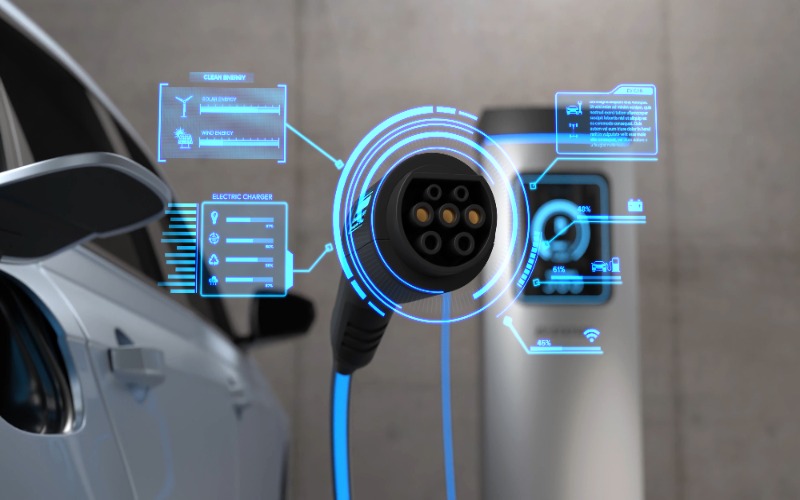The electric era is here and it’s all about infrastructure. As global consciousness shifts towards sustainable practices, electric vehicles (EVs) are rapidly becoming the transportation mode of choice. This transformation, however, is not just about the vehicles themselves but also about the infrastructure that supports them. From charging stations to battery production facilities, the backbone of the EV revolution is its infrastructure.
The Current State of EV Infrastructure
The year 2022 was a watershed for the EV industry. Electric car sales globally exceeded the $10 million mark. Leading this electric charge was China, leveraging its vast manufacturing base and proactive government policies. It accounted for a staggering 60% of global electric car sales. Europe wasn’t far behind, witnessing a 15% surge in sales, translating to one in every five cars sold being electric. The United States, while starting from a smaller base, saw an impressive 55% growth in electric car sales, capturing an 8% market share.
While the dominant players continue to grow, emerging markets like India, Thailand, and Indonesia are showing promising signs. These nations tripled their electric car sales in 2022 compared to the previous year, reaching a combined total of 80,000 units. India’s government, recognizing the potential of EVs, has rolled out a USD $3.2 billion incentive program, which has already attracted investments totaling USD $8.3 billion.
The Growth of Infrastructure
The proliferation of EVs necessitates a robust charging infrastructure. As the number of EVs on roads multiplies, cities globally are ramping up their efforts to install public charging stations. These stations, equipped with the latest fast-charging technology, aim to make charging as convenient as refueling at a traditional gas station. Electric vehicle car chargers for businesses have become increasingly important as charging infrastructure spreads beyond public areas. By installing chargers at workplaces and commercial establishments, businesses can offer added convenience for employees and customers who drive EVs. This initiative not only supports the growing demand for EV charging options but also aligns with sustainability goals, enhancing the company’s green credentials. Ensuring a wide network of accessible charging stations is vital for the continued adoption and success of electric vehicles.
Furthermore, home charging solutions are also gaining traction, allowing users to charge their vehicles overnight, ensuring they start each day with a full battery.
The battery is the lifeblood of an electric vehicle. As EV adoption rates soar, there’s a parallel surge in battery manufacturing. By March 2023, the announced battery manufacturing capacity for 2030 seems poised to meet, if not exceed, the projected demand. But it’s not just about quantity. Research and development in battery technology are in overdrive. The focus is on increasing energy density, reducing charging times, enhancing safety, and ensuring the batteries have a minimal environmental footprint.
The Future of EV Infrastructure
Governments worldwide recognize the potential of EVs, both from an environmental and economic perspective. The European Union and the United States have recently implemented policies aimed at bolstering their EV infrastructure. The EU’s new CO2 standards and the U.S.’ Inflation Reduction Act are expected to be significant demand drivers. These policies, combined with incentives like tax breaks and rebates, are set to supercharge the EV revolution.
By 2030, the landscape of urban transportation is set to undergo a sea change. Current projections suggest that electric car sales will constitute 35% of all car sales. This growth will necessitate a corresponding expansion in infrastructure. We can expect to see multi-modal charging solutions, integrating public transport, personal vehicles, and shared mobility solutions.
Battery swapping stations, currently in their infancy, might become commonplace, offering users the ability to “refuel” their vehicles in minutes. By 2030, the total installed LDV charger capacity is projected to grow more than ninefold to 1.9 TW in certain scenarios.
Key Trends and Developments to Watch For
- Increased Charging Speeds: Technological advancements will likely lead to even faster charging times, making EVs more convenient for long-distance travel.
- Expanded Charging Network: Governments and private companies will continue to invest in expanding the charging infrastructure, ensuring that EVs remain accessible to all.
- Vehicle-to-Grid Integration: EVs may play a crucial role in stabilizing the electrical grid by providing power during peak demand and storing excess energy during off-peak hours.
- Autonomous EVs: The convergence of autonomous driving technology and electric vehicles could revolutionize transportation, making it safer and more efficient.
We may see the development of wireless charging technologies and solar-powered charging stations. Also, expect more charging stations integrated into existing infrastructure, such as parking garages and streetlights.
Influential Demographics and Urban Planning
Urban areas, with their dense populations and shorter commute distances, are the primary adopters of EVs. City planners are integrating EV infrastructure into their urban development blueprints. From dedicated EV lanes to charging stations in public parking areas, the city of the future is being designed around the electric vehicle. However, the growth in emerging markets indicates that rural areas are not far behind. With the right mix of policies and incentives, rural EV adoption can witness exponential growth.
Environmental Impact and Sustainability
The shift to EVs is not just a technological transformation; it’s an environmental imperative. Traditional vehicles, powered by fossil fuels, are significant contributors to global greenhouse gas emissions. EVs, on the other hand, have a much smaller carbon footprint, especially when charged using renewable energy sources. The growth of EVs, combined with a shift towards green energy, can play a pivotal role in combating climate change. In 2022, electric vehicles enabled a net reduction of approximately 80 Mt of greenhouse gas (GHG) emissions on a well-to-wheels basis. This reduction is significant, considering the global push to combat climate change. The rise of EVs also means a reduction in the demand for oil. Based on existing policies, oil demand from road transport is projected to peak around 2025. By 2030, electric vehicles are expected to displace over 5 million barrels of oil per day.
The electric revolution is a holistic transformation. It’s not just about the vehicles but also about creating a sustainable ecosystem to support them. As we accelerate into an electric future, the growth and evolution of infrastructure will play a crucial role in determining the pace and success of this transformation. The next decade promises to be an exciting phase in the journey towards a cleaner, greener, and more sustainable future.











